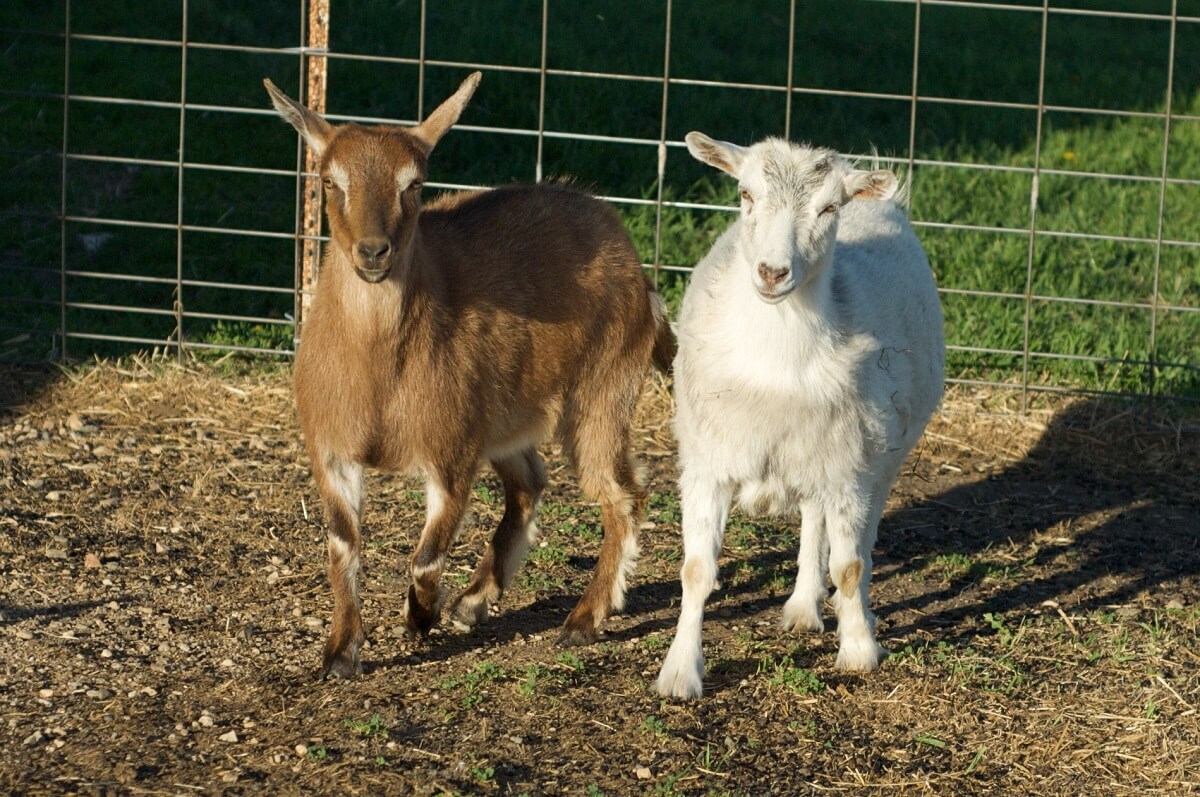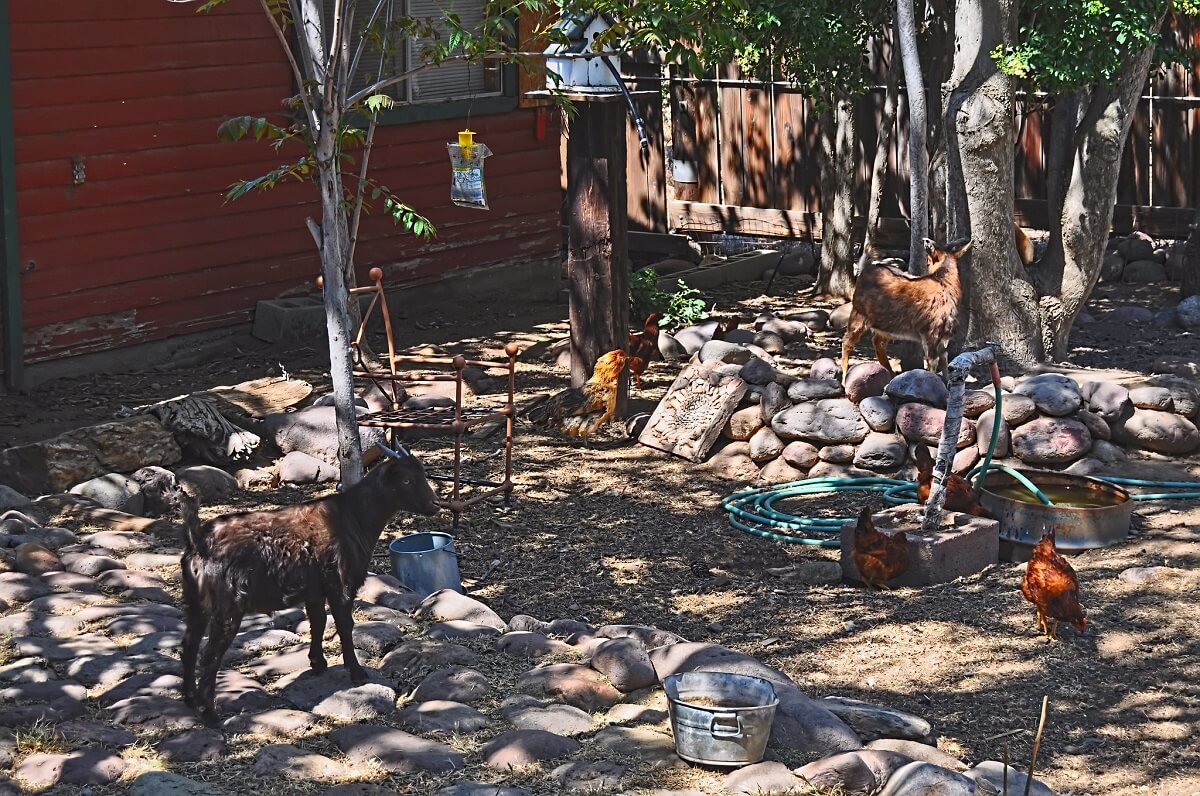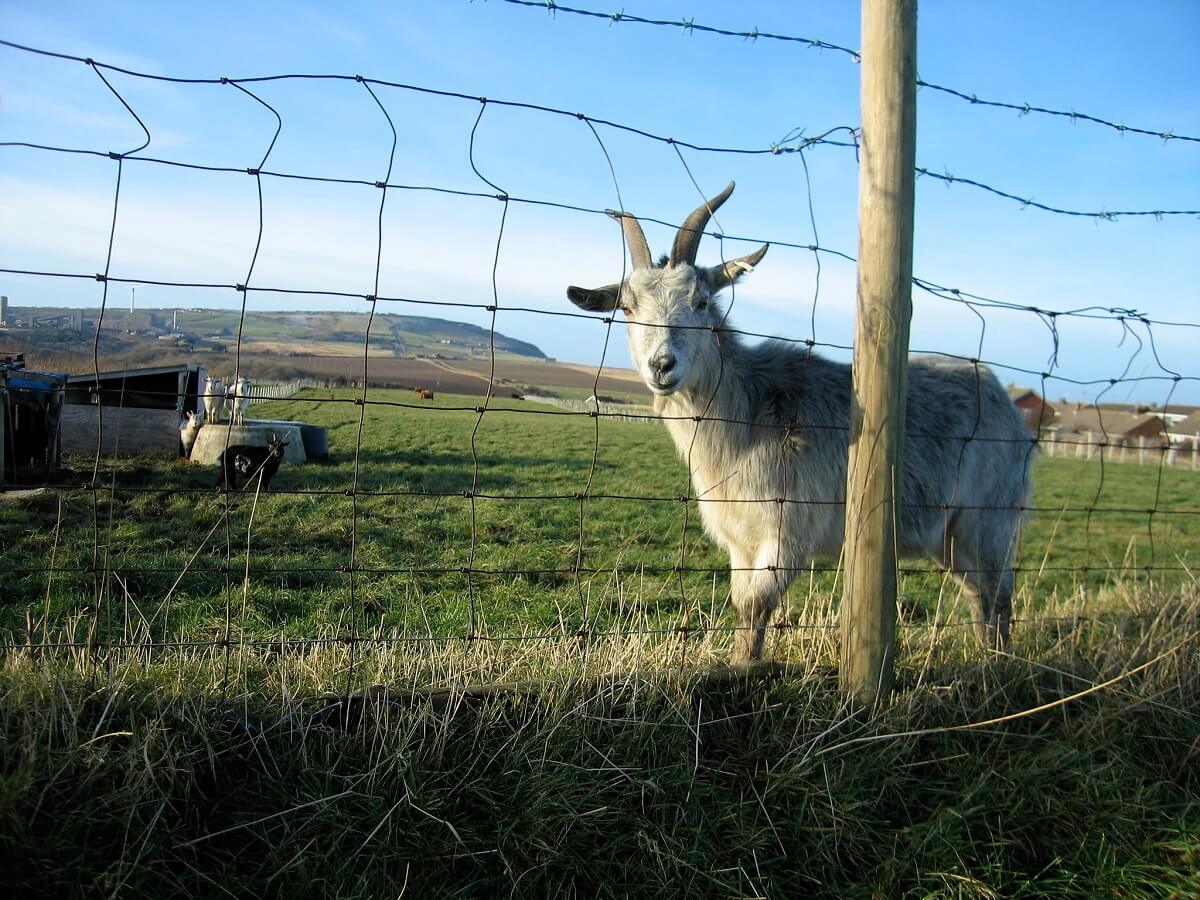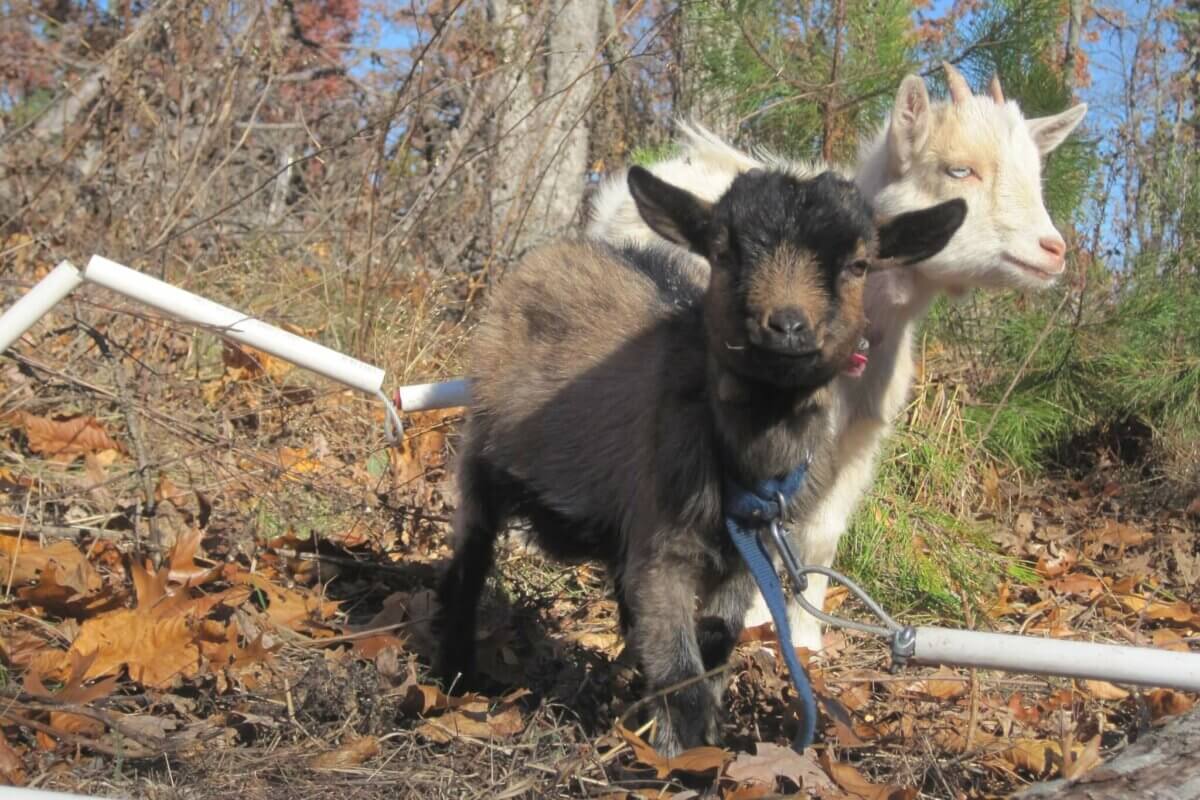My first interaction with fainting goats was unintentional. I was jogging along a park trail, watching the trees go by while enjoying the quiet rhythm of my pounding feet. That reverie was jostled into confusion, however, by the sound of something screaming.
It wasn’t human, and as I looked for the source, a goat blundered into my path! He was obviously not where he was supposed to be.
I remembered recently passing a farm and figured the little guy was probably from there. Somewhat impetuously, I scooped it into my arms, backtracked until I found the field fence and pasture, and awkwardly, hoisted it over the fence to safety.
And that’s when I found out its breed. Though the drop was 6 inches at most, it was apparently, enough to trigger the Tennessee Fainting’s most famous attribute — a stiff-legged somersault. I couldn’t help but laugh as the rescued goat gave a pathetic bleat and laid still on the ground, legs skyward.
You’ve seen them in online videos and probably laughed likewise. But there’s far more to this breed than unexpected gymnastics. Why do they faint, who was it in Tennessee that thought it was worth breeding, and what else do they offer the homestead? Let’s delve into the world of fainting goats. They may end up being the perfect breed for you.
Tennessee Fainting Goat Characteristics
The Tennessee Fainting is an unusual breed in the world of goats. While most breeds have a pretty strict set of standards defining their appearance and type, the fainting goat is sometimes still known as a landrace –“an animal breed that has been developed through traditional farming practices for many years in a particular locale without influence from modern agricultural science.” Though they are definitely a breed in their own right, the attributes allowable in that realm are far wider than most other breeds.
These goats are like the proverbial box of chocolates — “you never know what you’re gonna get.” Fainting goats may have long hair, short hair, or even cashmere to offer the home spinner. They can (and do) come in any color or pattern.

You may have a goat with small horns, no horns, or long and curly horns. Even their size is variable. Some goats only reach a petite 50 pounds while others can grow all the way to 175. Some have excellent teat conformation and can give as much milk as a Nigerian Dwarf. Others won’t.
With all that variation, however, there are a few relative constants. Fainting goats should display some degree of the myotonic faint. Devotees of the breed say this characteristic is a requirement for the true, historical type. Additionally, these goats typically have upright, horizontal ears, a concave profile with a defined eyebrow ridge, and the trademark buggy eyes that give them an endearing face.
Related Post: Raising Nigerian Dwarf Goats
Due to their landrace nature, fainting goats can be used for any purpose a goat can fill. With their dense bodies and ample muscling, they make good meat goats. With their possibility of cashmere, they can be fiber animals. Some goat keepers say their milk is the creamiest and least “goaty” they’ve ever tasted. And with their docile nature and lack of climbing ability, they can make enjoyable pets.
Finally, they make a good contribution to the genetic diversity of a larger herd. They are known for their parasite resistance and easy kidding, and they can be bred all year round. Just make sure a small doe is never bred to a bigger buck!
Why Does A Fainting Goat Faint?
The many names used to refer to this breed (Texas Wooden-Leg, Stiff-Leg, Nervous, Scare, and Tennessee Fainting) show peoples’ fascination with the breed’s unique attribute. These goats don’t suffer from a weak constitution, so you can shelve the smelling salts. They are not actually losing consciousness in a true faint. The actual cause of the fainting is a condition called myotonia congenita.
The unusual phenomenon is a genetic disorder that causes the muscles to get stuck in a prolonged contraction when the goat is startled. It’s a muscular issue, rather than neurological, so you’ll sometimes observe the goat continuing to chew its cud while it waits for its muscles to release.
It’s also totally harmless (the goat will usually unfreeze after about 10 to 15 seconds) and admittedly quite amusing. The degree of faint-ability varies with every individual goat. Some will do the trademark stiff-legged-fall-over while others will simply seize up and freeze in place. Some goats may only react occasionally, while others may faint every time they are triggered.
Goats aren’t the only beings that can have this disorder. It’s been observed in other living things including people — and is sometimes referred to as Becker-type, Thomsen disease, or (appropriately) fainting goat syndrome.
How To Get Started Raising Fainting Goats
If you have decided to make fainting goats a part of your life, there are several bits of infrastructure that need to be in place before you welcome them home. Adding any animal to the homestead should never be an impulse buy, and this is especially true when it comes to larger livestock.

Preparing a safe place, good fences, and the necessary supplies before the animals arrive is key to a less stressful transition and enjoyable start to your fainting goat relationship. And I do say animals, rather than an animal because you should always plan on having more than one goat at a time. These social herd animals will not thrive in solitude.
Install Goat Fencing
The first thing to secure is boundaries. Remember my story about the wayward goat in the intro? That wasn’t a novel circumstance. When I found the farmer and let them know I had returned his goat, I learned that escaping was a daily MO.
Anyone who keeps goats knows they are surprisingly intelligent when it comes to testing the confines of any fence. Often, they can pinpoint and exploit a weakness with surprising perseverance. Though fainting goats aren’t climbers, they are known for tunneling beneath a fence which is why the heavy stone fences of historical Tennessee were so effective in keeping them contained.

To avoid wandering goats and keep your neighbor’s lettuce bed — and friendship — in prime condition, good fencing is paramount for keeping goats.
Related Post: Raising Boer Goats
I wrote an article about goat fencing basics here, so if you want some in-depth information on your options, be sure to check it out. For the CliffsNotes version: If you’re going to go cheap on anything for your herd, don’t do it on fencing. Taking the time to install a solid fence will pay for itself in terms of safety, peace of mind, and secure gardens. Maybe you can take a note from the past and pile rocks along the borders of the goat paddock for some extra security.
Build A Secure Shelter
The second thing is shelter. Goats aren’t like sheep. They can’t stand being out in bad weather, and they’ll suffer for it. Giving your fainting goats a place to get out of the wind, rain, and snow will keep them healthy and happy. This is particularly important during kidding season, and with goats that are able to breed year-round, a solid shelter will be essential.

The third thing is predator protection. Fainting goats are on the smallish side, and the fainting certainly doesn’t help if they are surprised by a hungry stray dog.
Make Sure Your Property Has Lots Of Goat Food
Feeding goats isn’t that complicated. If you keep just a few goats and have enough land, you can even source the majority of their feed from the land itself. I wrote another article on the basics of goat feeding here.
Goats, as browsing animals, are much like deer in their feeding habits, meaning tree branches and leaves are much more their style than endless green pastures.
A Brief History Of Tennessee Fainting Goats
The origins of the fainting goat sound like the opening to a mystery novel. The best summary goat historians can trace starts in the 1880s with a man named John Tinsley. He was believed to be an itinerant worker who came to a farm in Tennessee. No one really knew where he’d been before Tennessee, so the origin of the four goats he brought with him was unknown.
The three does and buck were odd. They would often get stiff and fall down for no apparent reason. After a year, Tinsley sold his strange fainting goats and left the state to disappear in the mists of time. Meanwhile, his curious caprines started to breed and slowly spread through several Tennessee counties.
The goats were desired for their unique characteristics — particularly the fact that they were terrible at climbing fences due to their faint-ability. In an area of the state covered in stone fences, these goats were nicely docile and far easier to contain than other breeds.
Related Post: Raising Goats
A handful of the Tennessee goats were taken to Texas, where they were developed into a meat breed. In modern times, depending on who you talk to, these meat-type Texan goats may be on the cusp of being their own breed. They have changed quite a bit of their appearance from their old Tennessee siblings, and many of their descendants don’t faint anymore.
Resources
Welcoming fainting goats to your homestead offers you many opportunities. This article is merely an introduction to a much larger study. Please check out the links below to start your journey in learning.
If you are interested in raising meat for your freezer, they’re an excellent choice. If you’re interested in having enough milk for your family, they can provide. If you are interested in preserving a historical breed, there are scores of ardent fainting goat appreciators online who will talk and walk you through the endeavor.
If you strike cashmere gold with your specific goats, you may even be able to generate a side income. And if you just want to laugh at the companionship of these funny little fall-over friends, you could probably do no better than these docile creatures. Find more information at the following resources.










































Leave a Reply